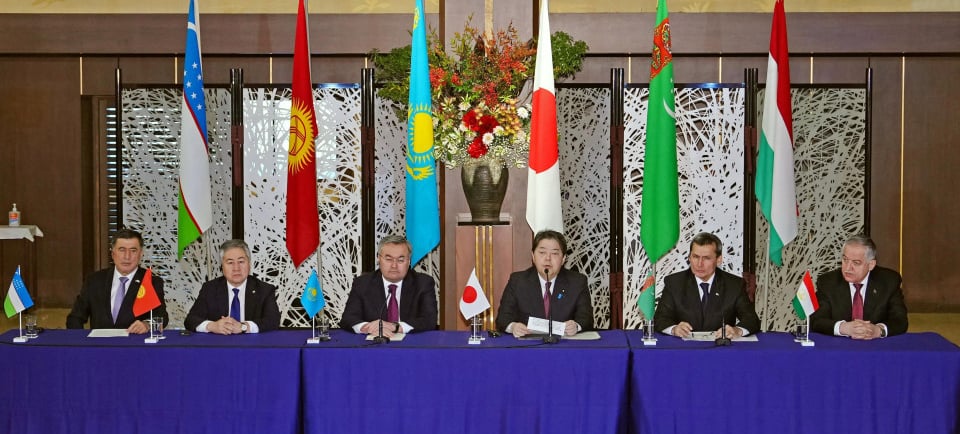The "Central Asia + Japan" Initiative and its Prospects
The Central Asia Plus Japan (C5+Japan) Business Forum, recently held in Astana, marked a significant step forward in strengthening economic relations between Japan and the Central Asian countries. How can the emerging opportunities in technology transfer, infrastructure development, and sustainable energy reshape the economic landscape of these regions and foster long-term collaboration?
JAPANKAZAKHSTAN
Taissiya Sheguy
9/1/20243 min read


The Central Asia Plus Japan (otherwise known as the “C5+Japan”) Business Forum was held in Astana on August 9, 2024. It has been very significant in developing economic relations between Japan and the five Central Asian countries of Kazakhstan, Kyrgyzstan, Uzbekistan, Tajikistana, and Turkmenistan. The forum brought together representatives from over 100 leading Japanese firms and organisations, as well as high-level officials from Central Asia. The main aim was to strengthen and expand business ties between the participating countries, simultaneously setting the stage for any future cooperation on areas such as technology transfer, infrastructure development, and sustainable energy. The forum has demonstrated great potential for Japan and Central Asia to build on existing economic relationships and explore more spheres for collaboration.
Former Prime Minister Ryutaro Hishimoto had introduced the concept of “Eurasian diplomacy” in the late 1990s, and Japan’s interest in Central Asia had only increased since then, with the country becoming a key partner particularly in technology and infrastructure development. Central Asia had always been rich in natural resources and possessed a strategic location. The recently emerging markets in the region present Japan with many opportunities to expand its influence and economic footprint.
However, historically, Central Asia had always maintained closer ties with Russia and China, thus overshadowing Japan’s involvement. Despite this, Japan has always had a consistent presence through the “Central Asia Plus Japan” initiative (which had been established in 2004), providing it with a platform for Japan to strengthen its relations with the region by focusing on economic benefits and regional stability, as well as showing support for self-governance and the reduction of Russia’s and China’s influence in Central Asia.
Several areas with potential for further collaboration were highlighted in the recent forum in Astana (the capital of Kazakhstan). Central Asian countries have shown a particularly keen interest in the transfer of technology, emphasising the region’s aim of creating a unique IT ‘ecosystem’ to modernise governance, fintech, and e-commerce sectors. Japan’s advanced expertise in these areas presents many potential partnerships of mutual benefit, with Japanese companies providing the technology and expertise that would aid Central Asia’s progress in the digital sphere.
Another critical area of discussion was infrastructure development. The expansion of the Aktau seaport and the construction of a gas turbine power plant at the Akshabulak oil field were some of the successful Japanese projects that were showcased at the forum. They were supported by Japanese financial institutions like the Japan Bank for International Cooperation and Sumitomo Mitsui Banking Corporation, serving proof for Japan’s commitment for long-term investment in Central Asian infrastructure. As transportation and logistics networks continue to develop, Japan’s investment could help the region become a key transit hub between Europe and Asia.
Japan is known for its sustainable and green technologies, and this focus aligns Central Asia’s growing interest in reducing their carbon footprint, particularly in the energy sector. Japan has introduced several of its plans during the forum, among which were methane reductions in Turkmenistan, projects related to wind and solar energy in Uzbekistan, and ammonia combustion for electricity generation in Kazakhstan. Such initiatives and the necessary technological support from Japan’s side could greatly aid Central Asia’s transition to a greener economy. Furthermore, with Kazakhstan planning to build a nuclear power plant in the near future, Japan’s past experience with nuclear energy could offer valuable insight and potentially be of great help.
Despite the many promising prospects for the future of business relations between these countries, the issue of relatively low level of trade still remains. In the previous year, the total trade volume between Japan and Kazakhstan had been $2.1 billion, only representing a small fraction of Japan’s overall foreign trade. Central Asia’s limited purchasing power and integration into global value chains are factors that pose a barrier to the expansion of economic ties between Japan and Central Asia. It should also be noted that Central Asian countries have increasingly been trying to reduce their reliance on natural resources. An alternative source of income, in an attempt to diversify their economies, has been the exchange of skilled labour. The problem, however, is that Japan is very cautious when it comes to foreign labour, with strict immigration policies and cultural resistance to foreign workers also posing a barrier to such exchanges. Although considering the fact that Japan is experiencing the issue of an increasingly ageing population, eventual labour shortages are inevitable, which is something that might push the country into adopting a more open stance towards foreign labour (which would include skilled workers from Central Asia), but such a change is most likely to be slow and gradual.
The “C5+Japan” business forum in Astana has greatly contributed to laying down the groundwork for economic cooperation between Japan and Central Asia. Japan’s aim to diversify its economic partnerships and support regional stability aligns well with Central Asia’s aim for modernisation and growth. With focuses on technology transfer, infrastructure development, and sustainable energy, both regions are likely to greatly benefit from closer ties, also presenting many opportunities for regional businesses in the future.


